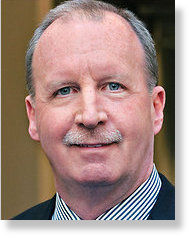
The company would not say how many jobs will be lost in Massachusetts, where fewer than 2,000 of its 25,000 employees are based. In February 2010, Boston Scientific said it would pare 1,300 jobs worldwide, but similarly did not say where.
Yesterday's move, a day after Boston Scientific disclosed it was investing $150 million and hiring 1,000 people in China, raised fears that the company will gradually shift more work to foreign sites with less government oversight and lower costs than the United States.
"I've asked for information on where they are cutting jobs,'' said state Senator James B. Eldridge, an Acton Democrat. He has proposed so-called clawback legislation that would allow the state to recover money from businesses that receive tax breaks here - including Boston Scientific - and then reduce their workforces.
"My sense is, sadly, that like many other American companies, they are shedding jobs in Massachusetts and adding jobs overseas,'' Eldridge said. "And this is a company making greater profits, so it's even more outrageous.''
Boston Scientific has been under intense US regulatory scrutiny in recent years because of defects in a pair of its best-selling cardiac products: tiny mesh tubes known as stents that are used to keep cleared arteries open and implantable defibrillators that send electric shocks to restore heart rhythm.
And earlier this month, the Food and Drug Administration said it was investigating whether plastic mesh made by Boston Scientific and other companies should be banned for a procedure to treat a gynecological condition called pelvic organ prolapse.
Despite those setbacks - and the surprise departure of chief executive J. Raymond Elliott, scheduled for the end of this year - the company yesterday posted stronger-than-expected second-quarter earnings of $146 million, or 10 cents a share, up from $98 million, or 6 cents a share, in the corresponding period last year.
Shares of Boston Scientific climbed 8.5 percent yesterday to $7.28, a gain of 57 cents.
Boston Scientific officials said the latest job cuts, which will involve layoffs and leaving open positions vacant, are part of a broader effort to save between $225 million and $275 million annually. That will enable the company to invest in new products and geographic markets as growth flattens in the United States and other Western countries.
Sales edged up to $1.9 billion from $1.8 billion in the three months ended June 30, but much of that growth came because Boston Scientific sold devices in countries with currencies stronger than the dollar.
"The world of health care is changing dramatically,'' said analyst Rick Wise, managing director at the Boston health care investment bank Leerink Swann. "Patient volume is under pressure, pricing is under pressure in the United States. But emerging markets are growing rapidly. It's an economic axiom that as wealth builds, demand for health care expands. So Boston Scientific wants to invest and grow and be a top-tier competitor in its industry.''
Toward that end, Boston Scientific unveiled a plan on Wednesday to spend $150 million to step up its commercial activities in China, one of the world's fastest-growing medical device markets. Those efforts will include building a manufacturing plant for the Chinese market as well as a training center for Chinese medical care providers that use Boston Scientific's products.
It will also involve investing in research and clinical studies in China and boosting the Boston Scientific workforce there from 200 to more than 1,200 over the next five years.
Elliott declined to discuss the expansion in China or the cutbacks. Other company executives would not provide information about how the moves are related or where jobs will be eliminated.
"This will occur through a combination of factors, including employee attrition and targeted headcount reductions as the program is implemented,'' a Boston Scientific spokeswoman, Denise Kaigler, said in an e-mail. "Plans detailing specific employee impacts will be developed for each affected region and business, and the company will consult in due course with relevant employee representative bodies, where required under local laws.''
Other steps unveiled by Boston Scientific yesterday included a plan to buy back up to $1 billion worth of company shares, which have lost more than 75 percent of their value since 2004. Among other challenges, the company has struggled to integrate Guidant Corp., which it bought for $28.4 billion in 2006. Company founders Pete M. Nicholas and John E. Abele have sold shares worth hundreds of millions of dollars over the past five years.
Nonetheless, stock analysts say Boston Scientific has made progress in its financial turnaround under Elliott, 61, who was hired in 2009 and abruptly disclosed in May that he plans to step down.
Elliott was paid $4.9 million last year after receiving a 2009 compensation package that included stock and options and was potentially worth $33.4 million, one of the richest executive payouts nationwide that year. The company's shares closed at $10 on June 25, 2009, the day the company named Elliott as its leader.
"We continue to believe Boston Scientific is moving in the right direction,'' Tao Levy, managing director at financial firm Collins Stewart, wrote in a note to investors yesterday. He cited, among other things, the restructuring and share repurchase programs.
The State of Massachusetts extended Boston Scientific tax breaks last year and in 1997 to create jobs at a Quincy warehouse and gave another in 2006 to create and retain jobs in Marlborough. As of the last state audit, the company was in compliance with the terms of those deals, said a spokeswoman for the Executive Office of Housing and Economic Development.



Reader Comments
to our Newsletter